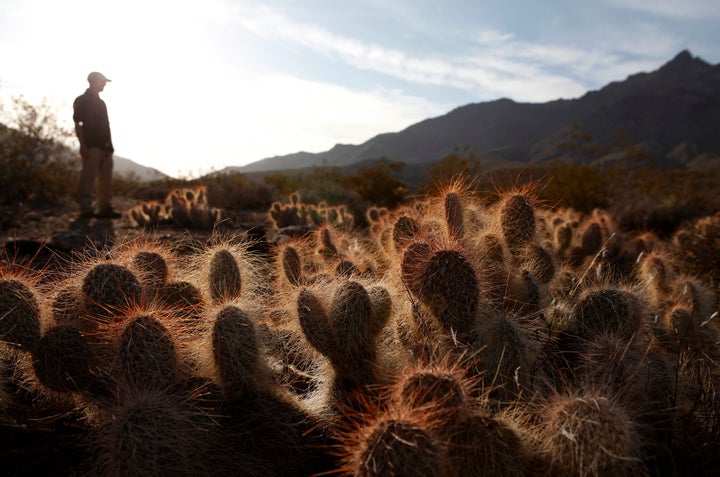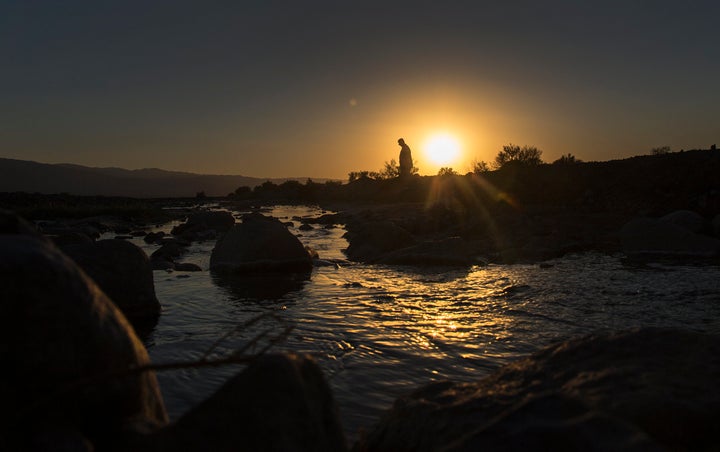
Cadiz Inc., which has long sought the federal government’s green light to pump groundwater from the Mojave Desert and pipe it to Southern California, has seen the project’s prospects brighten under the Trump administration.
In April, a potential backer of the project was nominated by President Donald Trump to a high-ranking Interior Department post.
In late March, the department’s Bureau of Land Management rescinded two legal directives the Obama administration used in a 2015 decision to block Cadiz from building the 43-mile pipeline. The BLM also declared that any reconsideration of that decision would be handled by its Washington office, rather than the agency’s California officials who made the call in 2015.
Under Trump, several efforts are underway to undo Obama-era environmental policies.
The Obama administration’s decision that effectively blocked the pipeline is still in effect, but Scott Slater, Cadiz’s CEO, is expressing confidence about the project’s chances. He told the Los Angeles Times last month he’s “cautiously optimistic” more good news will be coming from the BLM following the decision undercutting the legal directives.
Project investors also appear upbeat — the company announced last week it had lined up some $255 million in construction financing from a large private equity firm. The project would carry water to the Colorado River Aqueduct in Southern California.
The pipeline may have gotten another boost last month with Trump’s nomination of attorney David Bernhardt, who led the Trump transition team at Interior, to be the department’s deputy secretary.
Bernhardt works alongside Cadiz’s Slater, who is also an attorney, at the well-connected Washington-based law firm of Brownstein Hyatt Farber Schreck. The two previously co-chaired the firm’s natural resources department.
The firm will earn 200,000 shares of stock in Cadiz — worth about $3 million at today’s value — if the water pipeline is completed.
David Lamfrom, who as director of the National Parks Conservation Association’s California desert and wildlife programs has been closely monitoring the project for years, said he believes its improved fortunes under the new administration are no coincidence.
“Any reasonable person would believe these things are connected,” Lamfrom told HuffPost. “It’s hard for me to believe there’s another reason why the administration would be thinking about Cadiz and prioritizing it. I think everyone understands that this is a conflict of interest.”
In a statement to HuffPost, Interior Department spokeswoman Megan Bloomgren said that, should Bernhardt be confirmed for his post, he would have no financial interest in the law firm or its clients and would follow the guidance of the agency’s ethics personnel, per the terms of the ethics agreement he has already signed.
Further, Bloomgren said, Bernhardt would “absolutely recuse himself from any manner” in which previous employers or parties to previous employers have a financial interest.
Cadiz officials did not respond to a request for comment for this story, but Slater insisted in his interview with the Los Angeles Times that he did not believe Bernhardt had “anything to do” with the BLM’s change on the legal directives concerning the project. Company spokespeople have stated elsewhere that Bernhardt has never lobbied on behalf of Cadiz. Bernhardt did not reply to a request for comment.
As Cadiz describes it, the project would draw groundwater that would otherwise evaporate from basins underlying the Mojave Desert, creating a new source of water for Southern California communities who have struggled with droughts and rising water costs. Many water providers have said they would use water from the project.
The pipeline’s critics maintain it would damage the desert’s ecosystem — which is home to endangered wildlife and unique vegetation like the picturesque Joshua trees — by pulling unsustainable amounts of water from the desert.
Cadiz has said that the basins it would draw from — at a rate of at least 50,000 acre-feet of water per year — would be recharged at a rate of 32,000 acre-feet annually. But a study by the U.S. Geological Survey disputes those figures.
Sen. Dianne Feinstein (D-Calif.), an outspoken critic of the project, this week shared a letter from the agency saying its review of the basins had estimated a far lower recharge rate of 2,000 to 10,000 acre-feet per year.
“Based on the independent study by the USGS, it’s clear that Cadiz would quickly drain the aquifer, destroying all of the desert life it supports,” Feinstein said in a statement.

Despite its recent momentum, the Cadiz project has a number of obstacles it must yet overcome.
The Obama administration’s 2015 decision on it meant that the project would require a lengthy federal environmental review.
Whether the Trump administration reverses that decision remains an open question. Bloomgren notes that Interior’s department-wide review of opinions made by the previous administration, including those concerning the Cadiz project, is ongoing.
Cadiz must also get construction permits from the state of California, as well as win approval from the agency that operates the Colorado River Aqueduct. That agency, the Metropolitan Water District of Southern California, has emphasized that it wants the company to remove the carcinogenic chemical Chromium-6 from the water it transports — a process that may not be simple, though Cadiz has already secured an agreement to address the contaminant.
“I don’t think it’s a done deal by any stretch of the imagination,” Lamfrom said.
Still, environmentalists acknowledge Cadiz has good reason for optimism about its chances under the Trump administration.
Mariana Maguire, Southern California associate director for conservation at the Conservation Lands Foundation, said she is concerned the administration is ignoring both input from Mojave residents and the scientific studies of the project’s potential impact.
“The administration seems to be taking a position of pushing all that aside and not giving it credence,” Maguire told HuffPost.
If the project moves forward, Lamfrom said he believes it could have an impact far beyond the Mojave.
“There’s the potential that this serves as a harmful model for people who want to drain public lands,” he said. “It’s a roadmap to a place where most Americans don’t want to go.”
―
Joseph Erbentraut covers promising innovations and challenges in the areas of food, water, agriculture and our climate. Follow Erbentraut on Twitter at @robojojo. Tips? Email joseph.erbentraut@huffingtonpost.com.

